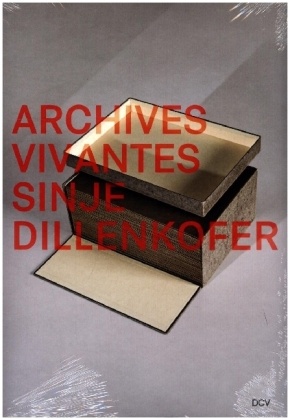
Sinje Dillenkofer - Archives Vivantes
| Verlag | DCV Dr. Cantzsche |
| Auflage | 2022 |
| Seiten | 106 |
| Format | 21,7 x 1,5 x 31,4 cm |
| Gewicht | 774 g |
| ISBN-10 | 3969121108 |
| ISBN-13 | 9783969121108 |
| Bestell-Nr | 96912110A |
In der Werkgruppe ARCHIVES VIVANTES fragt Sinje Dillenkofer (geb. 1959 Neustadt a.d.W.) nach der Bedeutung von "Archiv". Mit den Mitteln der bildenden Kunst macht sie das, was das Archiv nicht preisgibt, sicht- und wahrnehmbar. In diesem Bildessay richtet Dillenkofer ihren Blick in konzeptionell strengen und gleichzeitig mit einem breiten Spektrum an künstlerischen Ausdrucksmitteln inszenierten Fotografien auf Präparate, Artefakte, Grafiken und schriftliche Zeugnisse des Forschungsreisenden Alexander von Humboldt (1769-1859) und des Ornithologen Carlo von Erlanger (1872-1904). Damit thematisiert sie das Archiv als Modell von Natur und Wirklichkeit wie auch als Spiegel der "Natur des Menschen". In ihren auf die jeweiligen Besonderheiten der Sammlungsobjekte ausgerichteten Bildideen entwickelt die Künstlerin visuelle Analogien, Bild-Räume und Raum-Gebilde. Durch den besonderen Einsatz von Licht und Schatten erfahren einst "im Dienste der Wissenschaft" getötete Tiere und Pflanzen ein e "lebendige" Verkörperung. So wird das Archiv in einen neuen Kontext unseres komplexen Verhältnisses zu Natur, Mensch, Gesellschaft und deren Wertvorstellungen, Rahmen- und Machtbedingungen gestellt. Die Aufnahmen entstanden in sechs deutschen Sammlungsarchiven: im Museum bei der Kaiserpfalz Ingelheim, im Naturhistorischen Museum Mainz, im Senckenberg Forschungsinstitut und Naturmuseum Frankfurt, im Stadtmuseum Berlin und im Staatlichen Naturkundemuseum Stuttgart. Als erste Künstlerin erhielt Dillenkofer von der Staatsbibliothek Berlin - Preußischer Kulturbesitz die Gelegenheit zu einer künstlerischen Umsetzung der amerikanischen Reisetagebücher Humboldts.
Sinje Dillenkofer's (b. Neustadt a.d.W., 1959) body of work ARCHIVES VIVANTES inquires into the idea of the "archive," harnessing the means of visual art to allow us to see and perceive what the archive does not reveal. With staged photographs that combine conceptual rigor with a wide spectrum of creative techniques and devices, Dillenkofer's pictorial essay turns the spotlight on specimens, artifacts, graphic art, and writings compiled by the explorer and naturalist Alexander von Humboldt (1769-1859) and the ornithologist Carlo von Erlanger (1872-1904). Examining the archive as a model of nature and reality as well as a mirror of "human nature," the artist develops compositional ideas inspired by the peculiar features of the objects in the collections in visual analogies, pictorial spaces, and spatial compositions. Animals and plants that died long ago "in the service of science" are vividly embodied through the distinctive use of light and shadow. The resulting pictures consider the archive in a new context, framed by our complex relationships with nature, humankind, society and its values and ideals, circumstances and constellations of power. The pictures were taken in six German collection archives: at the Museum bei der Kaiserpfalz Ingelheim, the Naturhistorisches Museum Mainz, the Senckenberg Forschungsinstitut und Naturmuseum Frankfurt, the Stadtmuseum Berlin, and the Stuttgart State Museum of Natural History. Dillenkofer was the first artist to be invited by the Berlin State Library-Prussian Cultural Heritage to translate Humboldt's American travel diaries into art.
